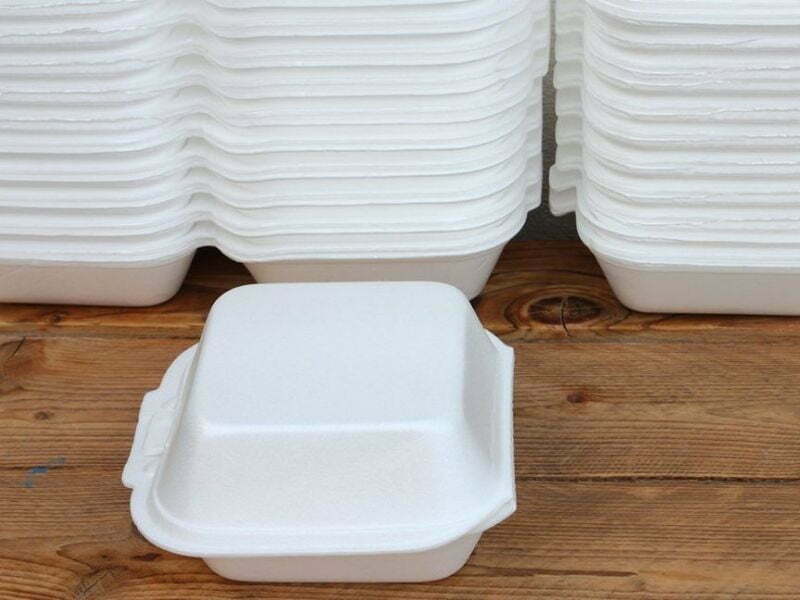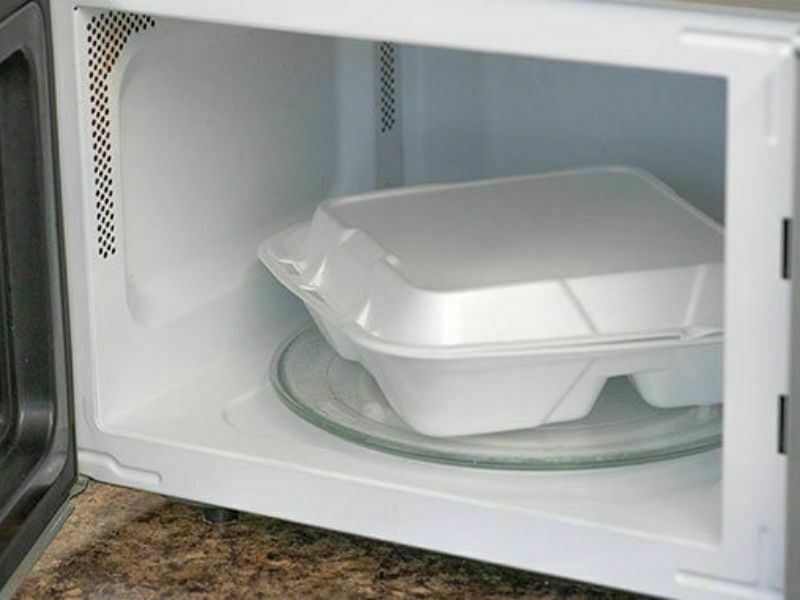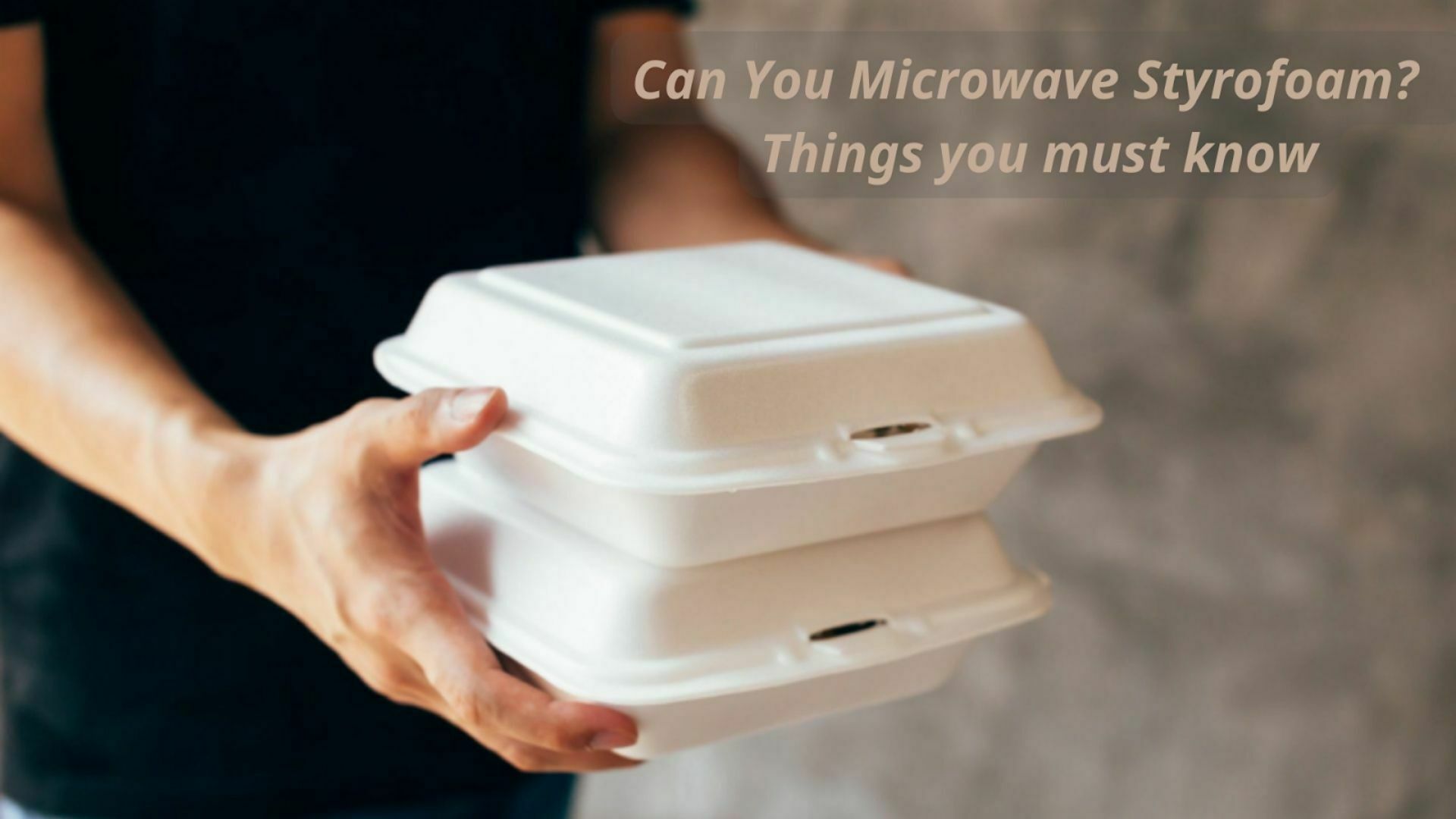Can You Microwave Styrofoam? A question can You Microwave Styrofoam which – is a query most all men and women ask themselves at some point, every single day. An individual might even wonder – Is it possible to microwave Styrofoam? A good deal of individuals will appear for the answer on google search, nevertheless – is can You Microwave Styrofoam safe?
What is Styrofoam?

Styrofoam is a trademarked brand of closed-cell extruded polystyrene foam (XPS), commonly called “Blue Board”. Manufactured as foam continuous building insulation board used in walls, roofs, and foundations as thermal insulation and water barrier.
Styrofoam is a form of plastic that has some serious drawbacks. It’s difficult to recycle because it tends to clump up rather than break down. It’s also petroleum-based, made from non-renewable fossil fuels that release harmful chemicals into the environment when burned or discarded in landfills.
Styrofoam is made from polystyrene. The most common form of polystyrene is hard, brittle, and transparent. It’s used in products like CD cases, egg cartons, and disposable cutlery. The other form of polystyrene is foamed polystyrene (FPS); many people refer to this as styrofoam. FPS is used to make all kinds of things including packaging peanuts, disposable food containers, cups, plates, bowls, meat trays, and egg cartons.
Can You Microwave Styrofoam?

Can You Microwave Styrofoam? Ask this question to the average person, and they’ll probably tell you that styrofoam is one of those materials you never put in the microwave.
However, there are some styrofoam products that can indeed be microwaved, so long as certain conditions are met. If your styrofoam is labeled with a microwave-safe symbol, it is safe to use in the microwave.
Styrofoam is actually a trademarked brand name for expanded polystyrene foam, but it’s often used as a generic term to refer to all disposable food containers made from expanded polystyrene foam.
Styrofoam containers are made of mostly air, so they’re less dense than plastic or glass containers. This means that the microwaves don’t pass through them and heat up their contents like they do with other containers. Microwaving styrofoam will only heat up the areas where the microwaves make contact with the container itself. This is why it’s not recommended to use styrofoam in the microwave unless it’s been specifically designed for that purpose.
Will It Be Harmful to Microwave Styrofoam?
No, it will not be harmful to microwave styrofoam. Styrofoam is made of polystyrene, a thermoplastic polymer with high heat tolerance. It begins to melt at 240 degrees Fahrenheit, which is well above the boiling point of water and the typical range of temperatures that microwaves can reach.
It is important to note that even though it may be safe to microwave styrofoam, you should avoid doing so if possible. Because styrofoam is comprised of air bubbles, it does not absorb heat well and can overheat quickly. This can lead to fires. If you do microwave styrofoam, make sure you are aware of the temperature of the container and never leave it unattended or exceed the recommended time for warming up food in your microwave.
How to Safely Heat Food in a Styrofoam
Styrofoam is a trademarked brand of expanded polystyrene foam. Food containers made of this type of foam are generally labeled with the word “Styrofoam” along with the number 6 inside the recycling symbol. Foam containers that don’t bear the name Styrofoam and are stamped with the number 5 can safely be heated in the microwave.
The Environmental Protection Agency notes that research conducted by Dow Chemical, the maker of Styrofoam, has determined that heating food in these containers does not present any health risks. However, it advises against heating foods in these containers because they may melt or warp during the process. Heating times should never exceed 30 seconds.
If you do decide to heat your food in a styrofoam container, it’s important to make sure that it doesn’t contain any metal parts and that it doesn’t have any cracks or leaks. You should also avoid using styrofoam containing coffee, tea or tomato products because these substances can leach out of the container and into your food and cause damage to your nervous system if consumed regularly over a long period of time.
5 Tips for Using Your Microwave
Microwaves are a great time-saving device, but they can be dangerous if used improperly. Here are five safety tips to follow when using your microwave.
1. Read the manual
Every microwave is different, so read your owner’s manual carefully before attempting to use yours. You’ll find important safety information as well as guidelines on which settings to use for particular foods.
2. Don’t use metal pans or containers
Metal pans can cause arcing, which could damage your appliance and possibly cause a fire. It’s also best not to use any plastic containers unless they are approved for microwave use. Some plastics contain chemicals that can escape into food when heated in the microwave and may be harmful if ingested.
3. Always cover food
Microwaving uncovered food releases steam that can build up inside the unit and leave residue on the walls of the oven. This makes it more difficult to clean, and can also cause damage to your appliance over time. Covering food helps distribute heat more evenly, so it cooks faster and more thoroughly.
4. Don’t operate an empty microwave
It’s tempting to set the timer on your empty oven and walk away while the clock counts down, but don’t do it! Without food or a container of water inside, microwaves will bounce around — and eventually escape — causing arcing and possible damage to the magnetron (one of the principal components of a microwave). When arcing occurs, turn off or unplug the oven immediately. To avoid this problem, always keep at least a glass of water in your microwave when you’re not using it (more on that below).
5. Avoid super-heated water
When you heat water in a container that’s not completely sealed (i.e., an open cup), water will start to boil at 212 degrees Fahrenheit (100 degrees Celsius). If you continue heating the water, it will eventually reach equilibrium at around 274 degrees Fahrenheit (134 degrees Celsius). Above this temperature, even though the water hasn’t boiled, it is still hot enough to cause severe burns if spilled.
To avoid super-heated water, don’t overheat your water or leave it unattended in the microwave. When it’s done heating, remove it from the microwave and stir it really well before taking a sip.
Conclusion
We have done some research to provide you with the best resource possible. Using the microwave is a great option if you need to heat up food or drinks quickly. It can be an alternative to using the stove and oven. After reading our article, you will no longer wonder “can you microwave styrofoam?”
